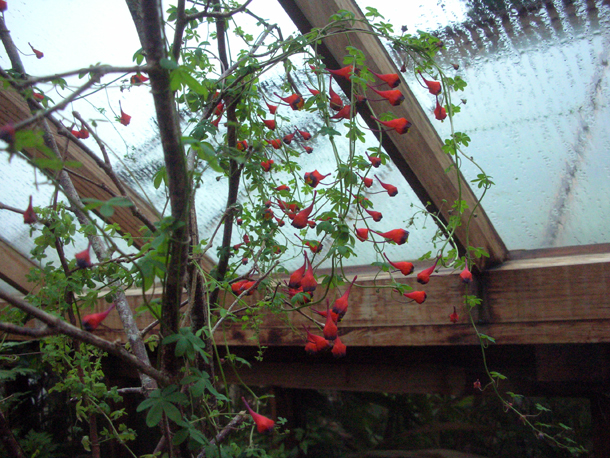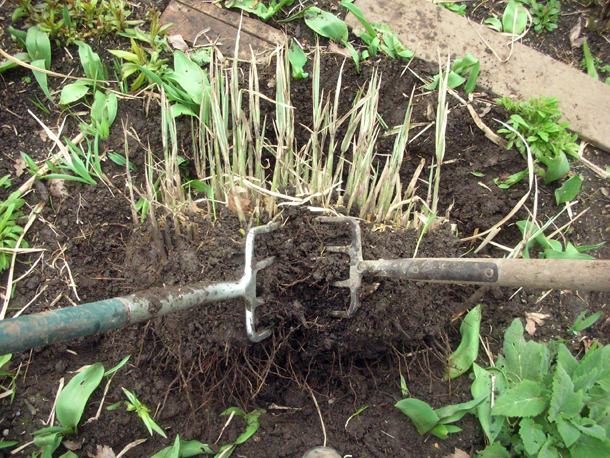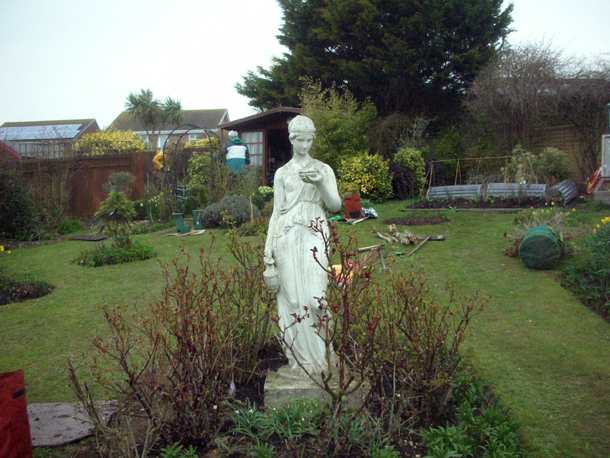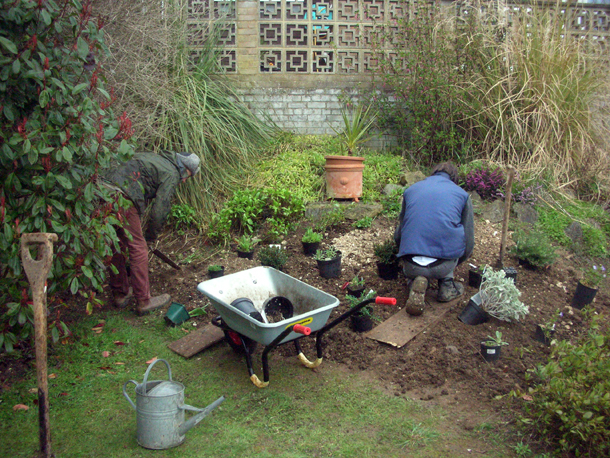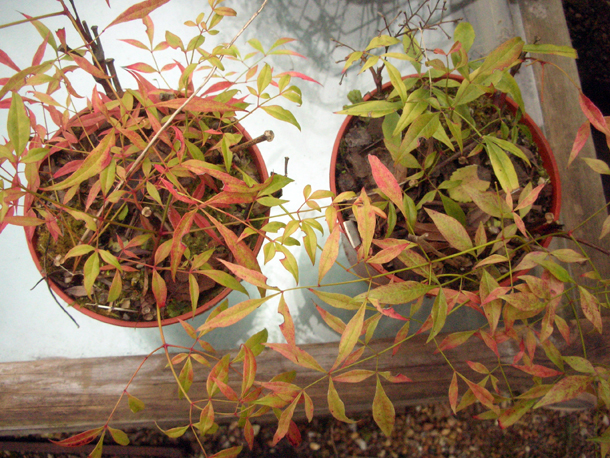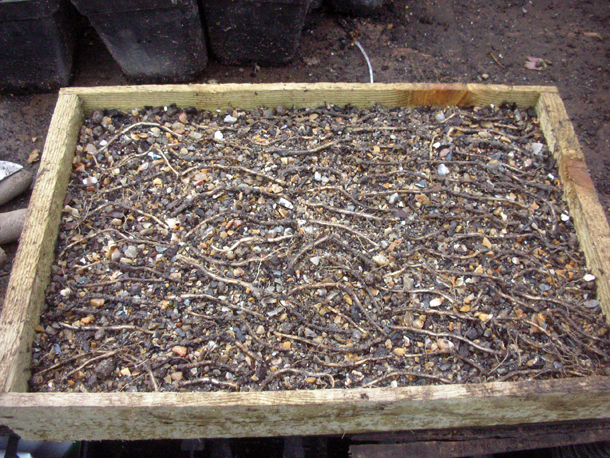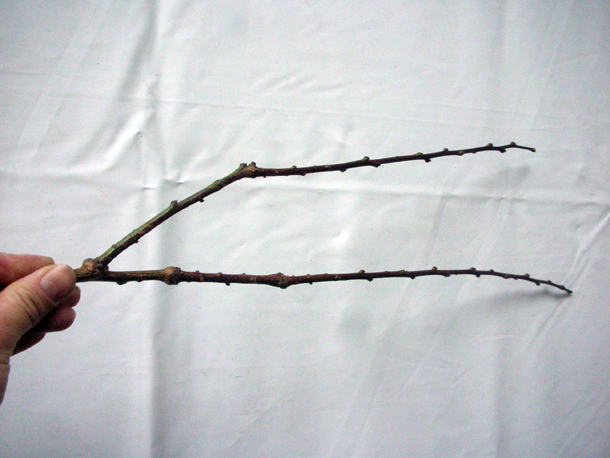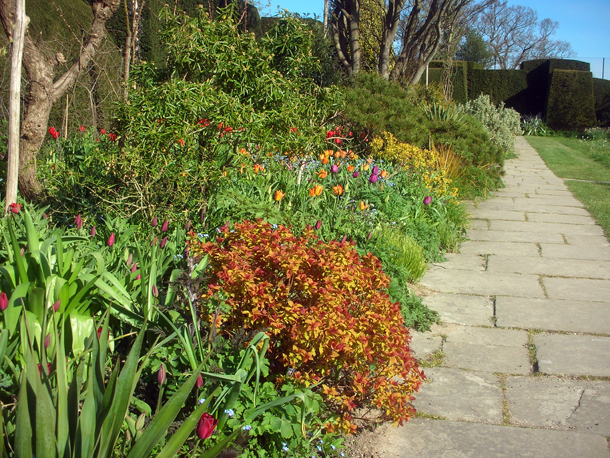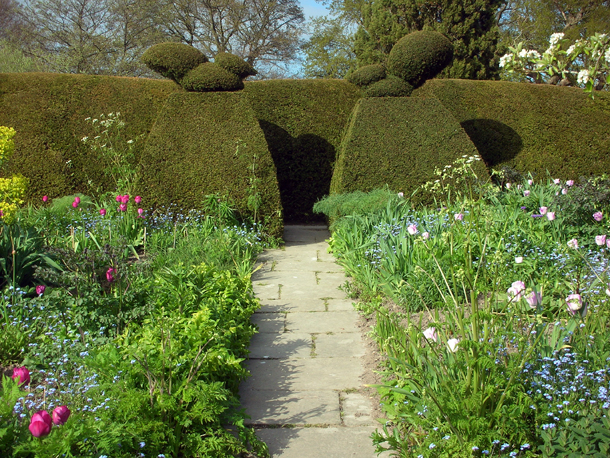Tues 23rd April
Weather: Hot! Started at 11°C and went up to 14°C, some said even to 20°C. Definitely a sunscreen and t'shirts day.
![]() |
Inside the coldhouse - we will be keeping the bubble wrap up as we will be moving more tender plants in, now
that the weather is warmer. |
There's a big upheaval in the greenhouses, as we are moving things on and out. From taking cannas & dahlias out of the cellar and making a record of them, we check to see what we have a shortage of.
Dahlia 'Witteman's Superba' for example is an important one for us, so I do more cuttings and split bulbs of these where I can. Then I positioned them all together on the heat bench to move them on faster. I also found some beneath the hot house benches.
I cleared the cold house, discarding any dead plants/ non-survivors.
Geranium maderense were taken out - they are ready for outdoor pots now, and I reorganised the space as some of the hothouse plants will be brought in here.
I also pricked out some rooted
Salvia confertiflora cuttings and split some
Salvia leucantha, potting them all up.
Weds 24th April
Weather: Overcast, it was suppose to go to 12°C but felt cooler again.
![]() |
| Coroten came back to visit for a week and I had his very helpful assistance for the day. |
Now that it is warmer we took out plants from the hothouse to put into the cold house - some of our
Salvia confertiflora stock (about 10), some
Impatiens bicaudata,
Lobelia,
Begonia luxurians,
Impatiens sodenii,
Senecio petasites,
Tagetes 'Martin's Mutant', especially plants that needed more height. They were all repotted. We are now giving them more room so that they can grow properly instead of just being stored. We keep a safety supply of some of the more tender ones in the hothouse.
I did some cuttings of
Impatiens sodenii that I trimmed and started tidying the hothouse too.
Thurs 25th April
Weather: Hot, a bit misty to start with, but before long it started to feel like a proper summer's day. The garden is now moving on fast, it might have moved two weeks forward again, as it was delayed by about a month from our prolonged winter. Up to 18°C today!
We split precious stock of
Seteria palmifolia (we have a very good form of it). Split & repotted
Cyperus papyrus and a lemon grass (
Cymbopogon) by accident! And placed them on the heat bench.
We moved out succulents & cactii from the coldhouse to put under a sheltered spot nearby, a fleece was later placed there on standby in case of sudden frost still. Benches & areas emptied were quickly refilled with repotted and cleaned up begonias,
Senecio petasites&
christiana, also more tagetes, restios,
Tibouchina urvilleana and
Amicia zygomeris.
We repotted some Emory Paul dahlias for a Wisley trial. A couple of pots of
Eupatorium capillifolium pricked out. Then both the cold and hot houses were watered thoroughly and tidied up more.
I had the amazing efficient help of veteran volunteers Cornelia & Frank - who definitely kept me on my toes and helped get the job done.
![]() |
| Tibouchina in flower in the greenhouse. |
Fri 26th April
Weather: Cold and overcast again - about 11°C.
Now that there was more space in the hothouse I reorganised the stock of
Begonia luxurians - including repotting and gave them more space to grow, putting a small underlayer of plants beneath them like ferns & impatiens, that wouldn't get in the way and would approve of a little shade. Work has been started on the space underneath the benches now, things that have been lying in partial darkness are being brought out into the light. All the
Colocasia&
Arisaema were removed from underneath and given a good change of soil.
Mon 29th April
Weather: Went up to 12°C. Sunny but cold winds and dark skies at intervals.
I finished clearing and organising underneath the benches of the hothouse - throwing anything out that was dead and repotted more
Arisaema and did more cuttings of
Dahlia 'Witteman's Superba' & 'Hillcrest Royal'.
Helped weed the Peacock Garden.
![]() |
| A tale of two halves in the Peacock Garden - light & airy with white purpley Tulipa 'Shirley' on one side and sizzling lime green Smyrnium and hot pink tulips on another. |
Tues 30th April
Weather: Up to 11-12 °C again. A cold wind pervails, but there is sun and it is a bit warmer in it. But later the wind picks up even more and the temperature drops down to 5 - 6°C at night.
Continued in the Peacock Garden weeding & doing some planting, boosting the numbers of
Perovskia atriplicifolia &
Rudbeckia already in there. I also started making a cage out of pea sticks to support the alstroemerias - I will expand on this process in a later post.
